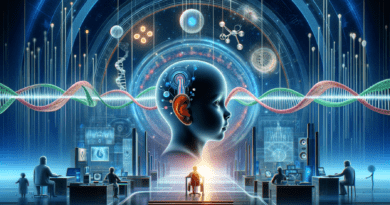Revolutionary Gene Therapy Offers Lifeline for Children with Fatal Immune Deficiency
In a striking medical advancement, a collaborative effort between researchers at the University of California, Los Angeles (UCLA) and Great Ormond Street Hospital in London has yielded promising results in the fight against a lethal genetic disorder known as ADA-SCID. This condition, characterized by a severe deficiency in the immune system, is a result of mutations in the ADA gene responsible for the production of the enzyme adenosine deaminase, crucial for immune system functionality.
Traditionally, children affected by ADA-SCID face immense challenges in performing everyday activities, with common infections posing severe health risks. Without treatment, the disorder proves fatal, usually within the initial years of life. However, a novel gene therapy approach might be changing the narrative for these young patients.
The technique involves extracting the child’s blood-forming stem cells, which possess the capability to develop into various blood and immune cells. Researchers then integrate a healthy copy of the ADA gene into these cells using a modified lentivirus. The modified stem cells, once reintroduced into the patient’s body, are engineered to continuously produce robust immune cells, potentially offering a permanent solution to the genetic defect.
Recent findings, documented in the New England Journal of Medicine, highlight the positive outcomes of children who underwent this gene therapy in clinical trials from 2012 to 2017. Dr. Donald Kohn of UCLA and Dr. Claire Booth from Great Ormond Street Hospital shared insights into the therapy’s success, noting remarkable recovery and immune system restoration in the majority of the treated cases. Out of 50 children treated, 48 showed significant improvement, with no serious complications attributed to the therapy itself.
This gene therapy, perceived as a one-time intervention, could revolutionize treatment for ADA-SCID patients, offering an alternative to the conventional, ongoing treatments like enzyme injections, bone marrow transplants, and the continuous administration of antibiotics and immunoglobulins. Such treatments not only impose a financial burden but also come with their own set of challenges, including the difficulty of finding compatible bone marrow donors and managing the side effects of invasive treatments.
The broader implications of this research are substantial. Beyond offering a lifeline to children with ADA-SCID, this breakthrough sets the stage for tackling a range of genetic disorders, potentially transforming the landscape of genetic medicine. It represents a leap towards a future where gene therapy provides a definitive cure for genetic conditions, reducing the reliance on more invasive, less effective treatments.
Disclaimer: This article is for informational purposes only and does not constitute financial or medical advice. Always consult with a professional for health-related decisions.



